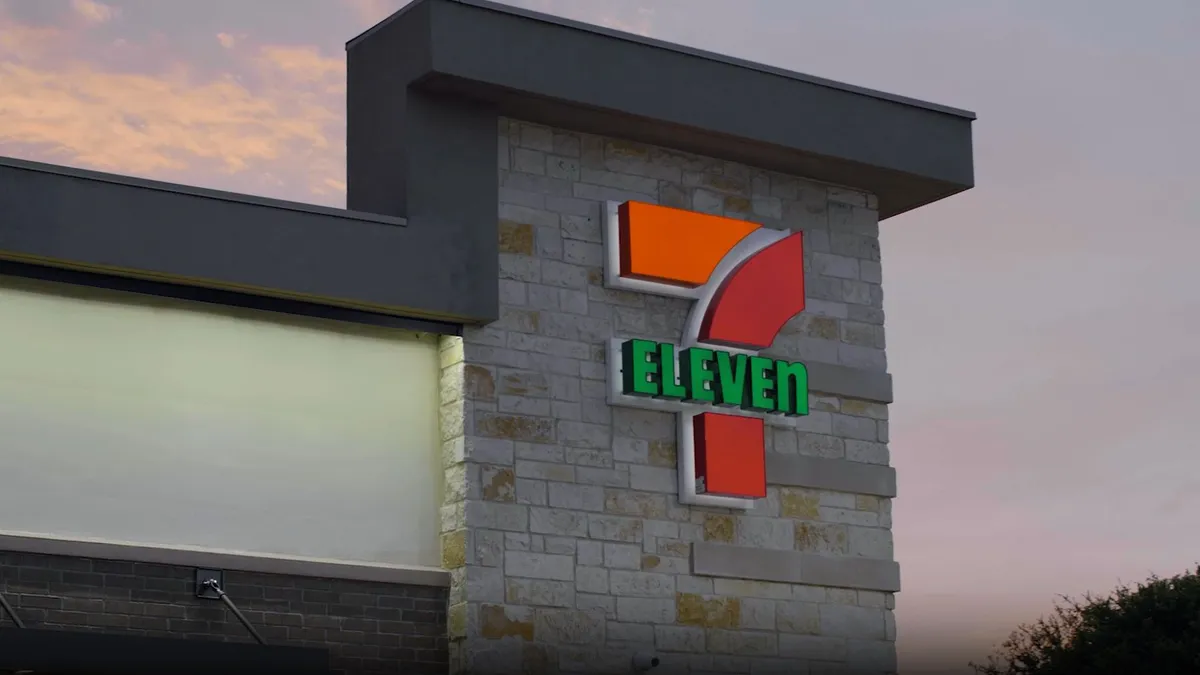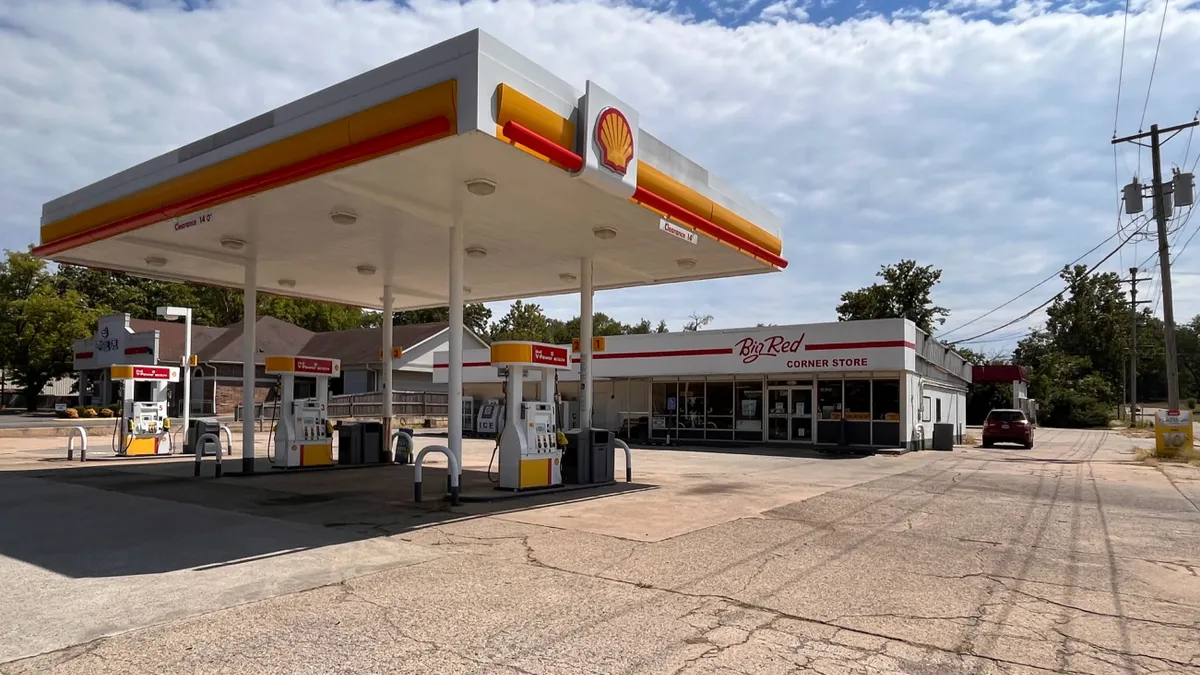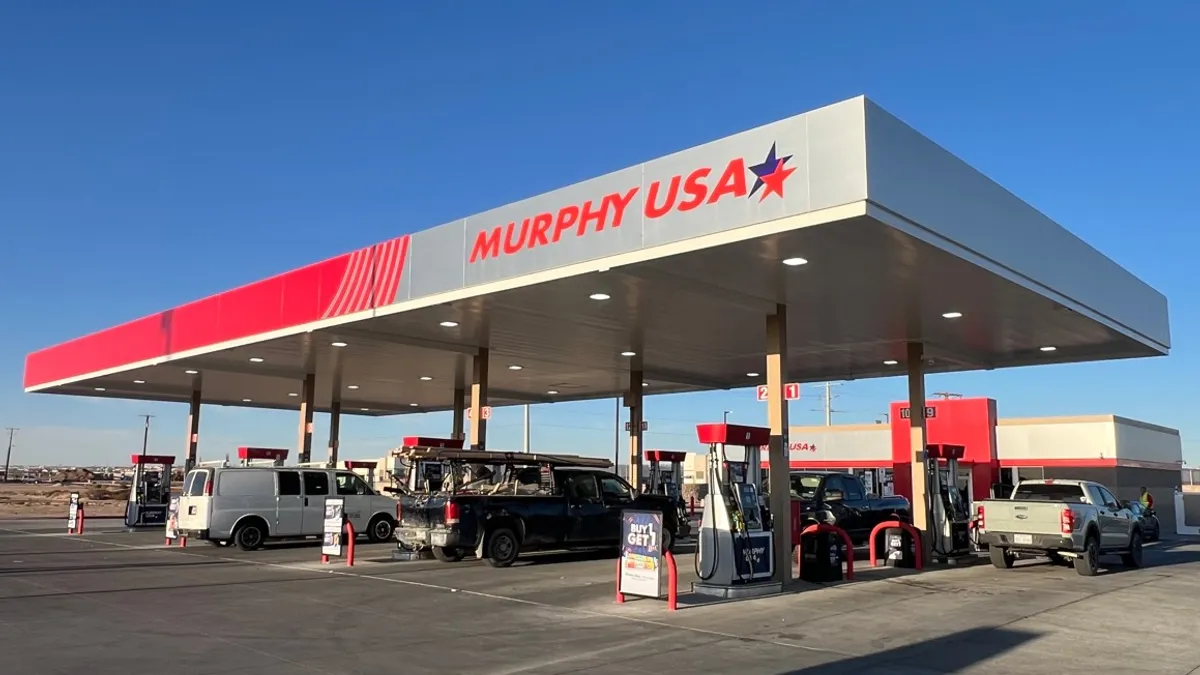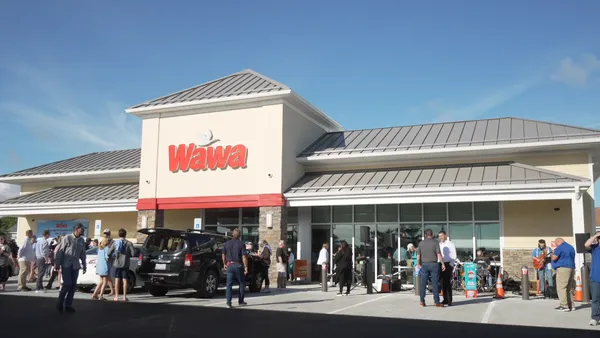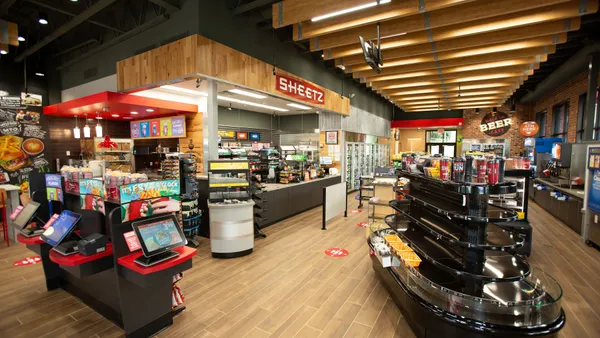Dive Brief:
- After absorbing more cost increases earlier this year in an attempt to boost foot traffic, 7-Eleven Inc. now plans to return to sharing more of that burden with consumers, according to the convenience retailer’s recent first-quarter earnings call.
- Same-store sales were down more than 4% in Q1 this year as compared to a nearly 5% increase in Q1 2023, in what the company called “both a sales and margin issue.”
- This announcement comes as the U.S. monthly inflation rate turned negative in June for the first time since 2020, according to data from the U.S. Bureau of Labor Statistics. Year over year, however, prices still rose..
Dive Insight:
While some prices may be dropping, most customers — and most c-stores — are still facing the cumulative effects of costs that soared during 2022 and early 2023. That makes whether or not to pass along costs a tricky question for c-stores as they balance foot traffic and overall revenue.
7-Eleven decided to try absorbing more of the cost increases in the first quarter, the company noted in the question and answer session of its Q1 earnings call.
“We made a decision to pursue traffic in the first quarter by sharpening our price points and not passing through some costs,” an executive with 7-Eleven said, according to a company transcript that did not list individual names. “Couche-Tard is definitely passing through costs, and this is bolstering their sales.”
7-Eleven is now shifting back in the other direction.
“With respect to our strategy for the rest of the year, where necessary, we will be passing on costs to the consumer,” a 7-Eleven executive noted, adding later, “We always look at the trend of demand. We will be in line with competitor prices.”
The executive also noted that 7-Eleven’s locations are largely urban, with only 28% of sites in rural areas. While urban stores outperform rural ones in some instances, several factors favor the rural stores, including inflation and pullback on government assistance hitting urban areas harder and work-from-home being a larger factor in cities.
7-Eleven trails competitors in number of rural stores
One bright spot for 7-Eleven’s footprint being mostly in larger population centers is delivery. Q1 sales for 7Now, its proprietary delivery service, were up 30% year over year, driven by so many customers being in close proximity to one of its stores. 7Now makes up about 6% of 7-Eleven’s sales for stores that offer the service.
7-Eleven is still following multiple other avenues to increase traffic and sales, including its ongoing food and beverage modernization program, updating the technology at its Speedway stores, expanding delivery and refreshing the exteriors and operations of about 4,000 locations.
The company called out the store refreshes as a strong driver of sales and traffic.
“We have seen good results from our pilot stores over the past few months, and I think that we will see a recovery in our performance compared to competitors, as we implement these strategies,” a company executive said.
It will also continue its shift toward higher-margin goods, including adding 215 new private brand items this year. These items’ margins are about 19 percentage points better than national brands, according to 7-Eleven. Upcoming new releases are expected to include a line of energy drinks in July, prosecco wine in September and a hamburger steak bento in December.
7-Eleven also hopes to improve financials by cost reduction, including increasing synergies with its Speedway acquisition.



